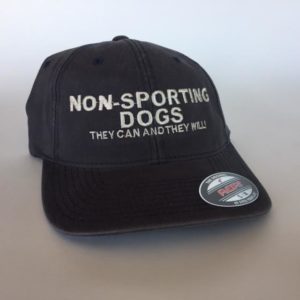
Spots are just the beginning.
Ticking, patches (a disqualification), clumps, old age ticking, and even stripe patterns can be found in Dalmatians. Their distinctive spots are the result of the interaction of several genes. Extreme piebald allele of the Piebald locus, in conjunction with the ticked allele of the Ticking locus, and non-flecked allele of the Flecking locus, produce the pigmented spots on a white background.
Ideally, the spots are round and well defined – the more distinctly defined with smooth edges – the better. They can vary from the size of dime to the size of fifty cent coin, and the less the spots “touch each other,” or intermingle, the better. Most Dals have spots all over their body, and one can even find spots in the mouths of many Dalmatians.
That being said, there are spotting variations, some of which are inherited, others more random. Here are a few of them:
Sliding Spots look like spots that are sliding off the dog’s body. Spotting will be more concentrated toward the bottom of the dog’s stomach while there’s little to no spotting on the back;
Dorsal Stripes are named for the heavier spotting down the dog’s back (think dorsal fin on a dolphin);
Light spotting and dark spotting are exactly what they sound like they are: Light spotting is seen on a Dalmatian with less than the ideal amount of spotting, while heavy spotting is more than the ideal amount of spotting;
Antique Spotting resembles ticking more commonly in other breeds with liver, lemon, orange and blue ticking. It’s said to be similar to spotting seen in paintings of dogs from the 18th century;
Senior ticking occurs in well marked dogs who have virtually no ticking but start adding it somewhere around their sixth, seventh, or eighth year birthday. Sometimes there’s a circle of frosted color around the actual spots, and tiny flecks of color moght show up mixed in with white areas.
Amazing in a breed that’s born totally white.
We didn’t have permission to share any of the photographs we found illustrating any of the aforementioned patterns, but if you have a picture to share of your Dalmatian with interesting spotting, especially if it touches upon the patterns mentioned above, we’d love to see them. For the benefit of folks not on Facebook, please do post them below on our website! 
Dalmatian owners, you’ll want NPDD’s official “Non-Sporting: They Can and They Will” hat for the coming months:
- Stone washed navy blue
- Classic low-profile cap
- Matching undervisor
- Lightly structured
- 98% cotton, 2% spandex washed twill
Get your hat in time for National Purebred Dog Day here.
Image: “My Faithful Dalmatian” by Suzann Sines is available as fine art, and in home decor and lifestyle items here
